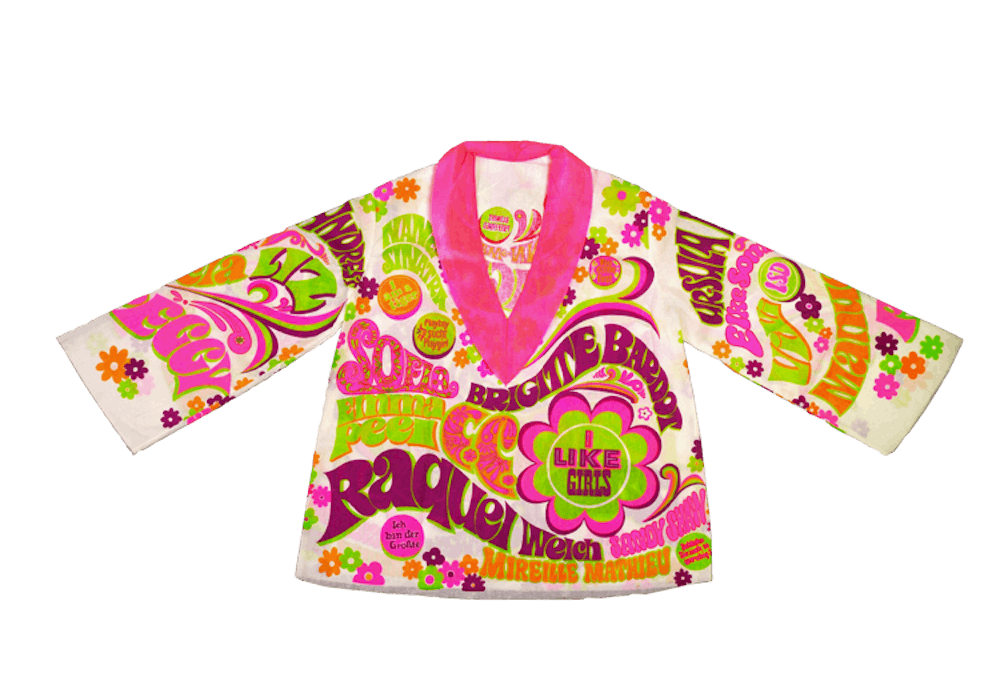The PMA show “The Peacock Male” proves that men didn’t always sport the sweatpants and frat–tee seen daily on Locust.
On the first floor of the PMA’s newly renovated Perelman building, 300 years of men’s fashion prove that real men wear pink might be a modern expression, but not a modern perception.
“The Peacock Male: Exuberance and Extremes in Masculine Dress” is set up in rough chronological order and feels like a thrilling history lesson. As museum–goers snake around the room, intricately embellished suit jackets from the 18th century make way for simplified industrial revolution top hats, which eventually land in the height of 1960s psychedelic panache.
By the time I reached a 2010 Phillies fan ensemble — the most up–to–date outfit — I had learned two things. First, a French man named Jean–Charles de Castelbajac created the Snuggie (or something strikingly similar) in 1987. And second, Western male sartorial expression, less exercised in the past 50 years than ever, has just as sophisticated of an artistic history as Western females’.
The term “Peacock Male” radiates through two facets of the show. Most obviously, it represents the Peacock Revolution of the 1960s, when paisley flamboyancy and silky boldness, donned by The Rolling Stones and The Beatles, defined menswear. A velveteen zebra jacket hangs next to Man’s “Paper” Shirt, made in Germany from non–woven cellulose. Paper clothes, a short–lived phenomenon, never had to be washed.
This particular long sleeve tunic — hot pink, purple, orange and green — is covered in bubble lettered sexual insinuations between and within plump flowers. On one shoulder, “You come first,” on another, “I am a tiger.” Rather than seeming aggressive, the swirly patterns and bright colors resemble freedom of expression and a tactful refusal of societal expectations: in one stiff top, the hippie mentality.
The second peacock element, one from 1993, grabs the eye immediately upon gallery entry and underscores one celebration of male fashion in Philadelphian tradition. Dancing Peacock by Joseph Andrus is a bright turquoise costume that was once worn by a performer in Philadelphia’s annual Mummers Parade on New Year’s Day.
The intricately sequined, feathery–cuffed body suit alone was astounding to imagine someone making and wearing, but the 10 foot diameter semi–circle covered in peacock feathers and strapped to the back could make any jaw drop. My back ached in sympathy for the mummer who wore this down Broad Street 20 years ago, but elaborate — and often heavy — costumes have defined the parade since George Washington occupied the First White House in Society Hill.
A special treat for Penn students hung near the center of the room. A navy sweater, laced up at the neck with “1896” stitched in red on the front, once belonged to Penn student I. Wistar Morris. Penn began participating in competitive sports in the late 19th century, and by the 1870s adopted the red and blue of which we have now grown so fond. Sweaters, a new type of clothing at that point, were thought to be appropriate for athletes because they had flexible material and were understood to open the pores.
Though the exhibit demonstrates a gradual and somewhat disappointing shift from 18th century lace and silk stockings to jeans, a graphic t–shirt and a plain sweater, it recognizes outlets like The Mummers Parade and team spirit that still allow men to express themselves without judgmental whispers trailing behind.

